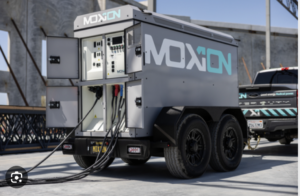The drought worsened this week in the Midwest and the Plains, but the region’s hydroelectric power has not diminished because abundant 2011 rain and snow filled reservoirs.
Nearly a quarter of the U.S. is enduring “extreme” to “exceptional” drought, according to the weekly U.S. Drought Monitor released Thursday by the National Drought Mitigation Center. That’s the highest percentage in those categories since record-keeping began in 2000. The entire states of Arizona, Indiana, Illinois, Iowa, Missouri, Kansas, Nebraska, Oklahoma and Colorado are in drought.
But hydroelectric power generated by six big dams on the Missouri River in the Dakotas and Montana was 12% above normal, providing enough electricity in July to power 90,000 homes for a year, says Mike Swenson, Missouri River power production team leader for the U.S. Corps of Engineers in Omaha.
The corps increased flow out of the dams to maintain enough water for navigation on the river from Gavins Point Dam in South Dakota to where the Missouri joins the Mississippi River at St. Louis, and the higher flows led to increased power production, he says.
“If it continues to be dry like this into the fall, then once we get into the next year, we will start to see some reductions,” he says.
Buck Feist, a spokesman for the Bureau of Reclamation’s Great Plains regional office, which oversees 79 reservoirs and 20 hydroelectric plants in nine states from Texas to Canada, says “reservoirs are working pretty much as they were designed — to store water to see you through these drought areas.”
Overall demand for U.S. electricity did not hit an all-time high in July, despite temperatures that made it the hottest month on record in the USA. That’s largely because of conservation practices and a soft economy, Edison Electric Institutespokesman Jim Owen says.
“Power demands are always higher in the summer when it is hot,” he says, but “demand has been a little bit soft overall for the last couple of years for one basic, fundamental reason: Even though the economy has improved a little bit, it is still a little soft around the edges.”
Peak demand so far in 2012 for the nine states that are all or partially served by the Little Rock-based Southwest Power Pool (SPP) was 53,690 megawatts on July 31, more than 1,000 megawatts below the Aug 2, 2011, peak.
SPP spokesman Pete Hoelscher says that power company officials are closely monitoring river levels for hydropower impact. If the heat persists, he says, demand for power could surge later this month when schools begin classes.


 Moxion and NUE
Moxion and NUE